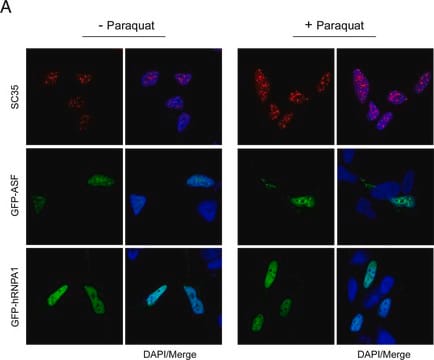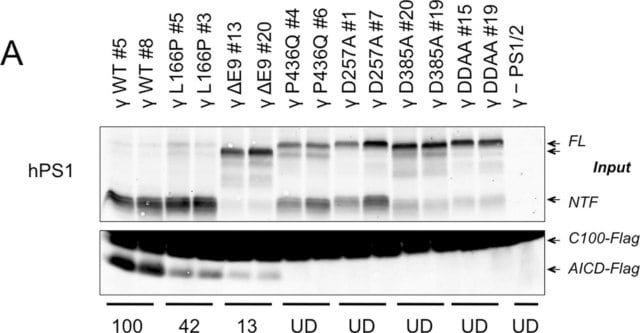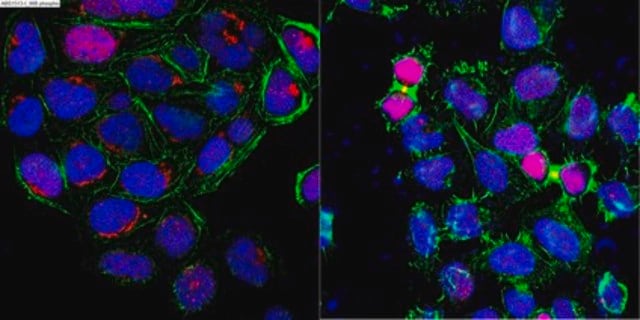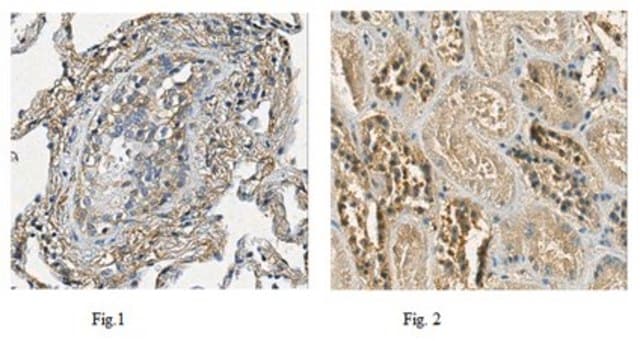P7854
Anti-Presenilin-1 (S182) antibody produced in rabbit
IgG fraction of antiserum, buffered aqueous solution
Sinónimos:
Anti-ACNINV3, Anti-AD3, Anti-FAD, Anti-PS-1, Anti-PS1, Anti-S182
About This Item
Productos recomendados
biological source
rabbit
conjugate
unconjugated
antibody form
IgG fraction of antiserum
antibody product type
primary antibodies
clone
polyclonal
form
buffered aqueous solution
species reactivity
mouse, human, Xenopus, rat
technique(s)
immunohistochemistry (formalin-fixed, paraffin-embedded sections): 1:100 using methacarn-fixed, formic acid-treated sections of Alzheimer′s Disease (AD) brain
microarray: suitable
western blot: 1:10,000 using whole cell extract of PC12 rat adrenal pheochromocytoma cell line
UniProt accession no.
shipped in
dry ice
storage temp.
−20°C
target post-translational modification
unmodified
Gene Information
human ... PSEN1(5663)
mouse ... Psen1(19164)
rat ... Psen1(29192)
General description
Specificity
Immunogen
Application
- immunostaining
- immunofluorescence detection
- immunohistochemistry
- immunoblotting
Biochem/physiol Actions
Physical form
Disclaimer
Not finding the right product?
Try our Herramienta de selección de productos.
Storage Class
10 - Combustible liquids
Certificados de análisis (COA)
Busque Certificados de análisis (COA) introduciendo el número de lote del producto. Los números de lote se encuentran en la etiqueta del producto después de las palabras «Lot» o «Batch»
¿Ya tiene este producto?
Encuentre la documentación para los productos que ha comprado recientemente en la Biblioteca de documentos.
Nuestro equipo de científicos tiene experiencia en todas las áreas de investigación: Ciencias de la vida, Ciencia de los materiales, Síntesis química, Cromatografía, Analítica y muchas otras.
Póngase en contacto con el Servicio técnico







![Western Blocking Reagent, Solution solution, sufficient for 10 blots (11921673001 [100 cm2]), sufficient for 60 blots (11921681001 [100 cm2])](/deepweb/assets/sigmaaldrich/product/images/352/091/ef743cea-ccd8-44f1-8f3b-dec5a1e4f5d1/640/ef743cea-ccd8-44f1-8f3b-dec5a1e4f5d1.jpg)
